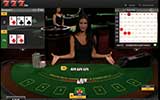Poker tournament bankroll tips
Allocate a specific amount for your poker tournament entry fees–consider a budget that allows you to participate in multiple tournaments without risking your entire bankroll. Aim for no more than 1% to 2% of your total bankroll for any single tournament. This strategy provides a safety net, enabling you to withstand periods of variance while staying in the game longer.
Prioritize your tournament selection based on your skill level and bankroll. Choose events that align with your strengths, whether they are small local games or larger online tournaments. This targeted approach maximizes your chances of return on investment, allowing you to build your bankroll progressively. Always keep track of your performances and be willing to adjust your strategy based on results.
Practice discipline when it comes to re-entries and add-ons. Resist the urge to “buy back in” after losing your initial stack unless it is within the percentage of your bankroll you allocated for that tournament. This practice prevents emotional decisions that can jeopardize your financial stability. By sticking to your budget, you enhance your long-term competitiveness.
Lastly, continuously assess your bankroll management strategy. Track your winnings and losses meticulously to identify patterns in your performance. This insight helps refine your approach over time, ensuring that you remain well-prepared and focused at the tables. Commit to learning from both successes and setbacks, and evolve your strategy accordingly.
Setting a Realistic Bankroll Goal
Establish a bankroll goal that reflects your playing style and financial situation. Aim for a bankroll that allows you to consistently play at your desired tournament level without risking your entire budget. A common recommendation is to allocate 100 buy-ins for tournaments. This approach provides a cushion against variance and allows you to absorb losses over time.
Evaluate your expected tournament entry fees and total budget. For example, if the average buy-in is , a reasonable bankroll would be ,000. This allows participation in a variety of tournaments while managing risk effectively. Consider your skill level and tournament frequency as well; increasing buy-in amounts may require higher bankroll allocations.
Regularly reassess your bankroll goal. As your skills improve and you gain experience, adjust the goal to reflect your new understanding of risk and reward. Create a plan to set aside a portion of your winnings for future buy-ins, which helps to build your bankroll more sustainably. Tracking your results and bankroll growth will help reinforce discipline and instill positive habits.
Lastly, stay committed to your limits. If you find yourself deviating from your set goals, take a step back and reevaluate. Stick to your plan, and maintain a balanced approach for long-term success in poker tournaments.
Determining Buy-in Limits Based on Your Bankroll
Set your buy-in limit to no more than 5% of your total bankroll for any single tournament. This percentage helps protect your funds while allowing for exploration of various events.
For example, if your bankroll is ,000, your maximum buy-in should be . This approach mitigates risk and allows you to participate in multiple tournaments over time. A disciplined plan helps avoid significant losses from a single event.
Adjust your limits based on your bankroll fluctuations. If you experience a downswing, reconsider your buy-in size. A smaller bankroll recommends a lower percentage, perhaps around 2-3%. Always evaluate your financial situation before registering for a tournament.
Consider your skill level as well. If you are a novice, minor buy-ins provide valuable experience with lower stakes. Advanced players may opt for higher buy-ins, but should still adhere to the 5% guideline to maintain sustainability.
Keep an eye on your performance across different buy-ins. Track results over time to identify which limits yield the best results for you. This analysis helps refine your strategy in future tournaments.
Here’s a quick reference on buy-in limits:
- Bankroll of : max buy-in (5%)
- Bankroll of ,000: max buy-in (5%)
- Bankroll of ,000: max buy-in (5%)
- Bankroll of ,000: max buy-in (5%)
Maintaining discipline around buy-ins fosters long-term growth. Protect your bankroll and enjoy the game while minimizing stress and pressure. Always revisit and adjust your limits as needed to reflect your current bankroll situation.
Creating a Staking Plan for Multiple Tournaments
Set clear parameters for your stakes by defining your budget for each tournament. Allocate a specific percentage of your bankroll to each event, ensuring you stay disciplined even during periods of variability.
Consider grouping tournaments by buy-in levels and estimating potential returns. For example, if you plan to enter several tournaments, having a total bankroll of ,000 allows you to allocate anywhere from 5% to 10% of your bank for each tournament. Adjust accordingly based on experience and confidence in your performance.
Establish a maximum buy-in threshold based on your bankroll. This prevents you from making impulsive decisions during periods of emotional highs and lows. Stick to your limits, and don’t increase your stakes without a well-defined rationale.
Incorporate a tracking system to monitor your performance across different tournaments. Use spreadsheets or poker tracking software to analyze results, noting which tournaments yield the best results and where adjustments need to be made. Regularly review your strategy to identify patterns.
Factor in variance and allow for downswings in your staking plan. High variance tournaments can lead to rapid fluctuations in bankroll. Always ensure that you have sufficient funds to withstand such swings and maintain your ability to compete in upcoming events.
Consider collaborations within the poker community for staking agreements, particularly for high-stakes tournaments. This can provide additional capital while spreading the risk. Make sure to clearly outline the terms of any staking arrangement to avoid potential disputes.
Finally, stay flexible and adapt your plan based on ongoing results and your personal assessment of skill improvement. Regularly reflect on your play style and tournament selection to refine your strategies for future events.
Monitoring Tournament Results and Adjusting Your Bankroll
Regularly track your tournament results to understand your performance patterns. Keep a detailed log that includes buy-ins, cashes, finishes, and any other relevant data. Review this log weekly or after every series of tournaments. This regular assessment allows you to spot trends, such as which buy-in levels yield better results.
Adjust your bankroll strategy according to your results. If you notice consistent losses, consider lowering your buy-in levels. A more conservative approach during downturns helps preserve your bankroll. Conversely, after a series of successful tournaments, it might be wise to increase your stakes gradually.
Set specific goals for each tournament and analyze your outcome against these benchmarks. This practice helps identify if you’re meeting your expectations and can assist in making data-driven decisions regarding future entries.
Create percentages to allocate your bankroll appropriately. For example, consider using a percentage-based bankroll strategy where only 5-10% of your bankroll is risked in any single tournament. This method protects your funds and provides room for adjustments based on your results.
Stay disciplined. Emotional responses to wins and losses can lead to impulsive decisions. Stick to your bankroll management plan, adjusting only based on consistent performance data, rather than fluctuating feelings after a session.
Incorporate a review process at the end of each quarter. Analyze your overall progress, making adjustments as needed. This periodic reflection allows for strategic changes that align with your evolving skill level and the dynamics of the tournaments you enter.
Dealing with Variance and Losing Streaks
Accept variance as an inherent part of poker tournaments. Each session can swing dramatically, and understanding this will help you stay level-headed during losing streaks. Keep a clear perspective on your results; they may not reflect your skill or effort in the short term.
Set realistic expectations for your performance. Establish key performance indicators (KPIs) that focus on actions, such as making the right decisions or maintaining a suitable bankroll. This reduces the pressure of worrying about immediate outcomes.
During losing stretches, avoid chasing losses. Stick to your game plan and bankroll management strategy. Adjusting your bet sizes impulsively can lead to hasty decisions and further losses.
Take breaks to recharge your mental energy. Stepping away provides clarity and may help you analyze your play without the emotion of a recent loss clouding your judgment. Consider discussing your experiences with fellow poker players or joining forums for support and perspective.
Viewing losses as learning opportunities is beneficial. Review your hands critically; identify mistakes or traps you fell into. Continuous learning and adapting will enhance your skills over time.
Finally, ensure to allocate your bankroll wisely. Diversify your buy-ins and avoid entering tournaments that strain your finances. This cushion allows you to mitigate risk and reduces the overall pressure during inevitable ups and downs.
Using Software Tools for Bankroll Tracking
Utilize dedicated bankroll tracking software to monitor your poker finances accurately. Tools like PokerTracker, Holdem Manager, and EasyPoker allow you to record all your buy-ins, winnings, and losses seamlessly. This visibility into your financial situation prevents overextending yourself in tournaments.
Track your ROI (Return on Investment) by feeding your session data into these tools. Calculate your ROI by dividing your total winnings by your total buy-ins and multiplying by 100. This metric gives immediate insights into your performance and helps identify profitable tournaments.
Establish limits based on your bankroll, which the software can help you visualize. Set thresholds for buy-ins in tournaments based on a percentage of your total bankroll. For example, common advice is to limit buy-ins to 5% of your bankroll for a single tournament.
| Bankroll Size | Maximum Buy-in (5%) |
|---|---|
| ,000 | |
| ,000 | |
| ,000 | |
| ,000 |
Analyze your tournament results regularly to spot trends. Look for patterns in your wins and losses based on the types of tournaments you play. This data-driven approach can guide your future tournament choices, increasing your overall profitability.
Backup your data regularly to prevent any losses. Many tracking tools offer cloud services for easy storage and retrieval, ensuring you don’t lose valuable information due to technical failures.
Integrate your tracking software with your poker sites for automatic data logging. This integration saves time and reduces the risk of human error, allowing you to focus on improving your game.






